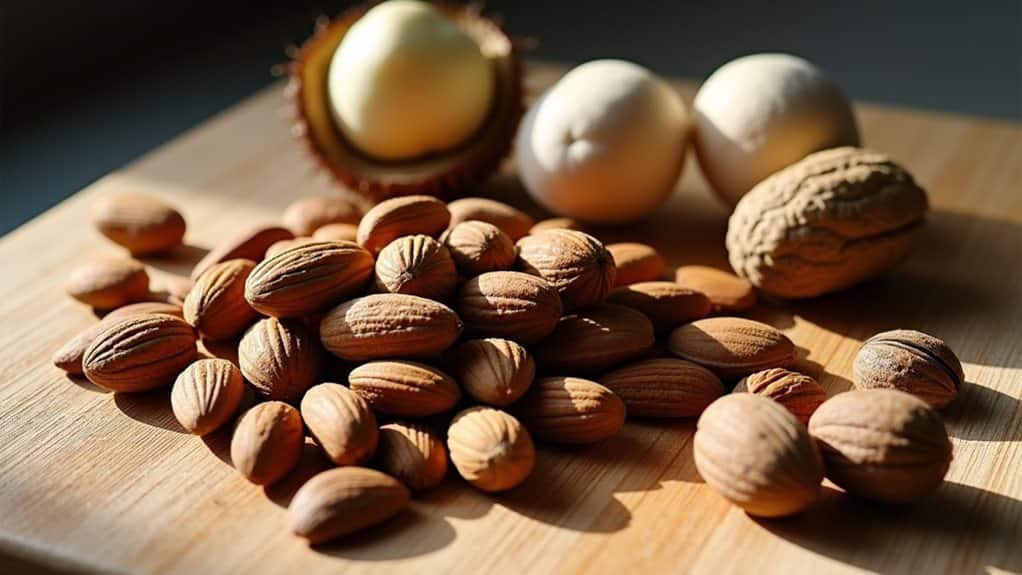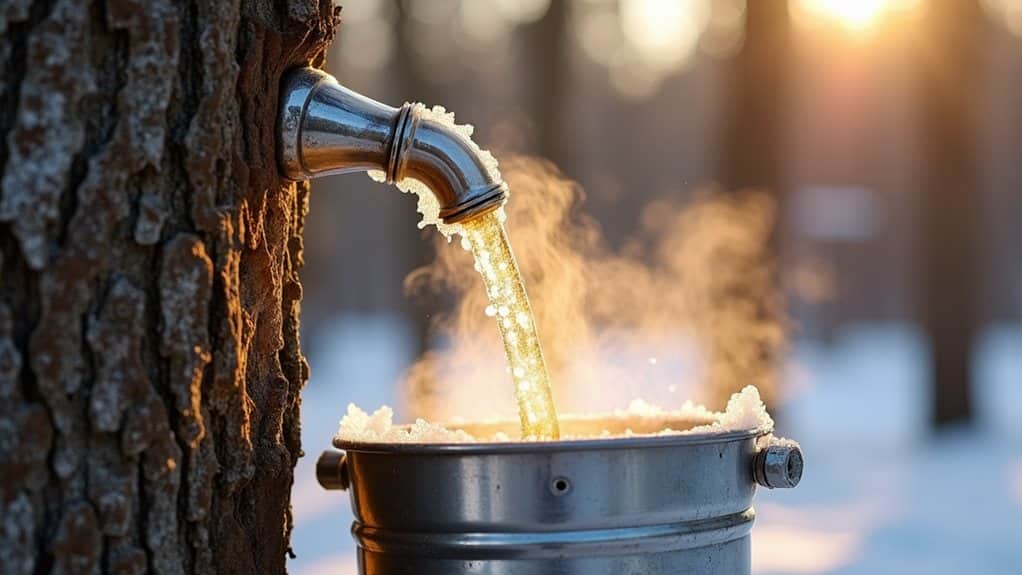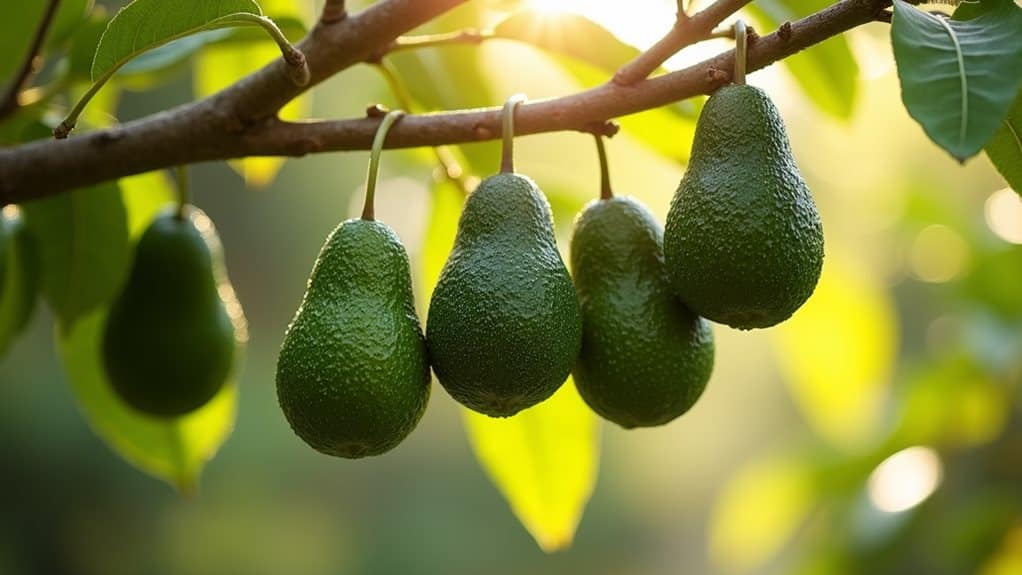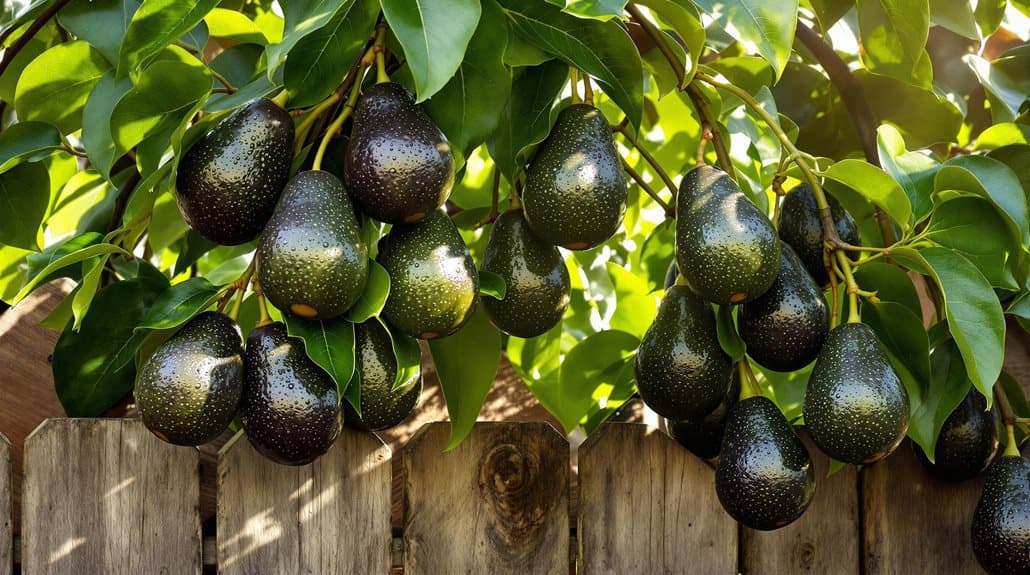Food That Grows on Trees: Nature’s Bounty
You'll uncover that trees are nature's most generous providers, offering an incredible variety of edible treasures throughout the seasons. From the familiar apples and oranges to exotic fruits like durian and jackfruit, trees have sustained human civilizations for millennia. But there's more to tree-based nutrition than just fruits – you're probably unaware that some tree barks contain more vitamin C than oranges, or that certain tree leaves pack more protein than soybeans. As you investigate this living pantry above your head, you'll find that modern science is only beginning to understand what our ancestors knew about these towering sources of sustenance.
TLDR
- Tree fruits like star fruit and pears provide essential vitamins, minerals, and antioxidants while remaining low in calories.
- Tree nuts offer concentrated nutrition through healthy fats and proteins, making them excellent portable snacks.
- Various tree species produce edible leaves and tender twigs in spring, expanding available food sources from trees.
- Inner bark from certain trees can be processed into flour, providing emergency nutrition in wilderness situations.
- Safe foraging of tree-based foods requires proper identification, knowledge of local regulations, and testing in small quantities.
Tree Fruits for a Healthy Life

In recent years, tree fruits have emerged as powerhouses of nutrition, offering an extraordinary combination of vitamins, minerals, and antioxidants.
The exotic star fruit delivers vital vitamin C while maintaining a low calorie count. Coffee grounds can enhance soil fertility, making it easier for fruit trees to absorb nutrients.
You'll love how star fruit helps enhance your immunity, while sapodilla's fiber keeps your gut happy!
Pears aren't just delicious – they're packed with antioxidants that'll protect your body, and pawpaw's protein content makes it nature's perfect energy snack.
All About Edible Tree Bark
Beyond the familiar fruits and nuts, trees offer another edible treasure – their bark.
You'll find this surprising food source in species like spruce, pine, and birch, where the inner bark is packed with calories and nutrients. Healthy dragonfly populations indicate a balanced ecosystem, which is essential for the growth of many tree species that provide edible bark.
When you're out camping, you can harvest it carefully from branches (never damage the trunk!), dry it in the sun, and even grind it into flour for wilderness baking excursions. This survival food has proven invaluable throughout history, serving as vital sustenance during challenging times like World War II in Russia.
Tree Nuts and Seeds Guide

A handful of tree nuts holds nature's most concentrated form of nutrition. You'll find these little powerhouses growing on trees as seeds with protective shells, each one packed with healthy fats and protein. Proper balance of nutrients is crucial for the growth of the trees that produce these nuts. While you might think all nuts are related, they're actually quite different – for instance, did you know that almonds and cashews are cousins, while walnuts and pecans share a different family tree? Unlike tree nuts, peanuts grow underground and are actually part of the legume family.
Fresh Leaves and Tender Twigs
Young twigs and tender leaves offer foragers a surprising array of edible options throughout the growing season.
When you're identifying edible twigs, you'll want to look for distinctive features like their arrangement (alternate or opposite), bud characteristics, and even their smell – some twigs have remarkable aromas like wintergreen! Additionally, it's important to be mindful of environmental stress when foraging, as it can affect the health and edibility of plants. Just remember, the most tender and tasty twigs are usually found in spring when they're fresh and flexible. Some species like birch trees are particularly notable for their bark that peels in thin papery layers.
Sweet Saps and Natural Nectars

Sweet, flowing sap from trees provides nature's own liquid gold in the form of natural sweeteners.
You'll find that sugar maple trees are nature's champion producers, where it takes an impressive 60 gallons of sap to create just one gallon of that delicious syrup you love on your pancakes! This process of sap collection can be influenced by temperature differences between the tree and the environment, similar to how condensation forms on propane tanks.
While other trees like birch can be tapped, nothing beats maple's sweet 2% sucrose content. This natural sweetener contains valuable trace minerals and electrolytes that make it a healthier alternative to processed syrups.
Wild Trees as Food Sources
If you're heading into the wilderness for camping or hiking, you'll want to learn how to identify safe, edible trees and plants that can provide natural sustenance along your expedition.
Before you start collecting wild foods like nuts, berries, or leaves, it's essential to check local regulations and permits, since many areas have specific rules about foraging on public lands.
While nature's pantry can be incredibly rewarding to investigate, you'll need proper identification guides, expert knowledge, and a healthy dose of caution to avoid harmful look-alikes that could turn your outdoor quest into an emergency room visit. Trees and forests have historically provided vital vitamins and nutrients through their diverse offerings of fruits, nuts, and edible leaves.
Identifying Edible Forest Species
Three key features can help you identify edible forest species: the tree's overall structure, leaf patterns, and fruit or nut characteristics.
You'll find some trees growing as tall giants while others form thickets, and their leaves might be simple or compound with distinct patterns.
When you're foraging, look for delicious nuts in protective husks during autumn, or edible leaves that you can spot year-round. Be sure to take only small quantities of unfamiliar plants when first harvesting to test for any potential reactions.
Foraging Safety And Laws
Before heading out to collect wild edibles from trees, you'll need to understand the legal and safety aspects of foraging.
You'll want to check with local authorities about where it's allowed, and when you find a spot, make sure it's at least 30 feet from roads to avoid contamination. Always remember to get proper landowner permission before harvesting anything on private property.
Health Benefits of Tree Foods

Among the many foods that grow on trees, guava stands out as a nutritional powerhouse with extraordinary health benefits.
You'll be amazed to learn that this incredible fruit can help your heart, lower your blood pressure, and even control blood sugar levels!
Plus, its leaves make a fantastic tea that's packed with antioxidants, and when you're feeling under the weather, guava's natural antimicrobial properties can help enhance your immune system. Studies show that consuming this remarkable fruit regularly can lead to a 9.9% cholesterol reduction in just 12 weeks.
Overall
When you're exploring nature or planning your next camping trip, remember that trees are incredible providers of sustenance, offering everything from sweet fruits to protein-rich nuts right at your fingertips! You'll be amazed at how these towering natural cafeterias can nourish you with their bounty, and once you've learned to identify edible tree foods, you'll never look at a forest the same way again – it's like having a grocery store in your backyard!







